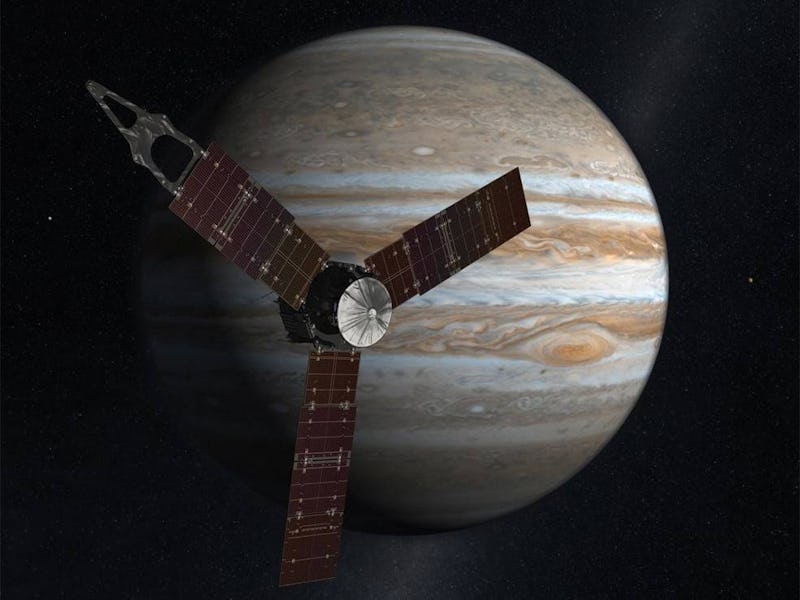Here's How to Watch NASA's 4th of July Jupiter Arrival
From June 16th until July 4th, NASA will be streaming press conferences and progress of the Juno spacecraft's mission to Jupiter.

Nearly five years ago, NASA launched its solar-powered spacecraft, Juno, into outer space for an incredible mission to the planet Jupiter. This summer, that mission comes to a close and an all-new chapter begins with Juno’s arrival and orbit of Jupiter. The history-making event will be livestreamed for all to see, along with several talks and conferences leading up to the big day, straight from NASA’s Jet Propulsion Laboratory (JPL) in Pasadena, California.
According to NASA, Juno’s mission is intended to help scientists understand the origin and evolution of Jupiter, look for a solid planetary core, map a magnetic field, measure water and ammonia in deep atmosphere, and observe auroras around the planet. The spacecraft will orbit the poles of Jupiter, which is a first in space science history.
Those eager to catch all of the press conferences, events, and the arrival itself can watch them live at NASA TV, NASA’s UStream channel, and NASA JPL’s UStream channel. In a much more public move, live coverage of orbit insertion day will occur via Facebook Live on NASA and NASA JPL’s respective pages.
For anyone looking to tune in live, here’s the full schedule of events leading up to the launch, starting in June:
Thursday, June 16
2 p.m. — Mission status briefing at NASA Headquarters in Washington
Thursday, June 30
1 p.m. — Mission overview news briefing at JPL
2 p.m. — Mission outreach briefing at JPL
Monday, July 4 – Orbit Insertion Day
Noon — Pre-orbit insertion briefing at JPL
10:30 p.m. — Orbit insertion and NASA TV commentary begin
Tuesday, July 5
1 a.m. — Post-orbit insertion briefing at JPL
Juno’s arrival is expected on July 4th at approximately 10:30 p.m. Eastern, and the plan for orbit goes as follows:
Juno will perform a suspenseful orbit insertion maneuver, a 35-minute burn of its main engine, to slow the spacecraft by about 1,212 miles per hour (542 meters per second) so it can be captured into the gas giant’s orbit. Once in Jupiter’s orbit, the spacecraft will circle the Jovian world 37 times during 20 months, skimming to within 3,100 miles (5,000 kilometers) above the cloud tops.